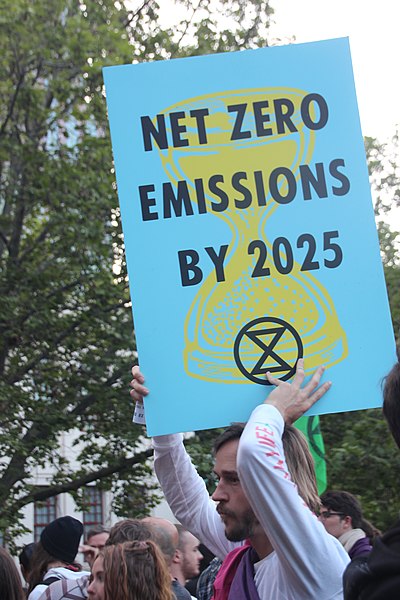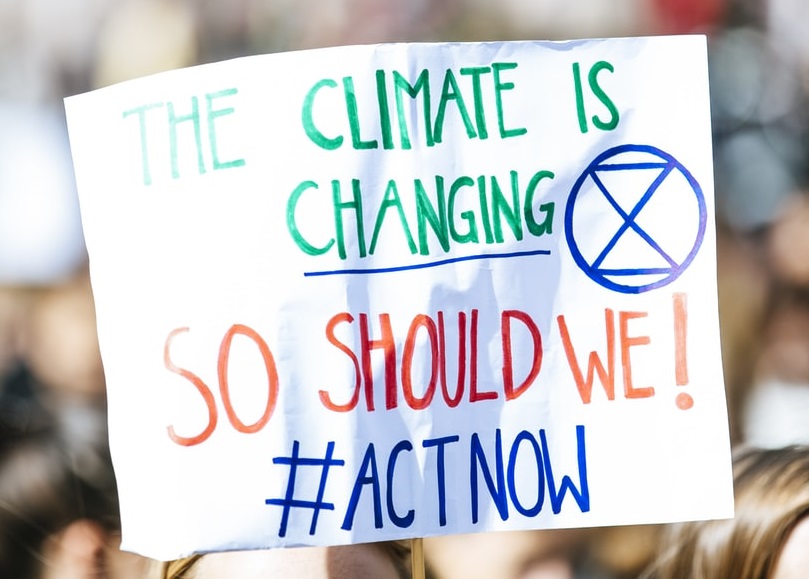Net zero pledges make for good marketing, but even the promises that have been backed with real action haven’t measured up.
Climate change is already happening and has been for a while. However, the sea level rise, wildfires, droughts, floods, intensifying storms and species extinctions we’ve experienced so far are only an appetizer, a taste of what’s to come. In order to avoid a scenario that has been described as “hell on Earth,” it would be a really good idea to keep the warming down to 1.5°C (or 2.7°F) above preindustrial levels. Only one problem: we’ve already burned through most of that. To stay below the threshold, we have to reach net zero emissions by 2050.
What’s that? Net zero means that humans are not adding any more greenhouse gases to the atmosphere, or, if we continue to add them, that we somehow remove the same amount, achieving balance. Ideally, the countries with a higher standard of living, which have already burned a lot of carbon, would wind their emissions down faster than low-income countries. It’s fair, not only because wealthy countries have more resources to potentially throw at the problem, but also because it allows poorer countries a bit more time to bring up their standard of living to a reasonable level. However, no matter how we do it, we have to start soon. There is no more time to waste.
In 2015, most of the world’s countries came together in Paris to sign a legally-binding pledge to keep warming well below 2.0°C, preferably under 1.5°C, by reducing emissions 45% from 2010 levels by 2030, reaching net zero by 2050. Only Iran, Eritrea, Libya and Yemen have yet to sign the Paris Agreement, with Iraq finally coming around late last year. If humanity can work together and stick to their goals, the climate will still change, even more than it has now, but there’s a 50/50 chance that we could stay under the threshold of truly catastrophic change.
That’s a big IF.
Signing an agreement, however binding, is only the first step. For it to be effective, action and change must follow. In a perfect world, leaders from all the signatory countries would go home and do whatever needs to be done according to law and custom to bring their jurisdictions into compliance. Unfortunately, it looks like net zero pledges from many countries and business alike may be little more than hot air.
After COP26, a coalition of financial institutions including banks, asset managers and insurers from 45 countries collectively pledged to deliver up to $100 trillion to help economies around the world reach net zero by 2050. This enormous sum could turn the tide for the climate effort, especially alongside the announcement that the coalition members were aligning their portfolios with the 1.5°C goal. But did they really mean it, or was it so much greenwash? How much do you trust Big Finance to do the right thing?

Their list of portfolio goals is admirable, on the surface. They include big investments in wind power in Europe and North America, “green” steel in APAC, solar power in Africa, and “green” fuels worldwide. However, getting to net zero means phasing out oil and gas, investments that are harder for banks to forego. It also ignores how absolutely dependent even “green” energy infrastructure is on oil and gas. These finance players have a long way to go to gain the trust of the public.
The United States Army has a net zero plan, too. They released their first climate strategy report earlier this month, with plans to cut pollution 50% below 2005 levels by 2030, install microgrids at every Army base by 2035 and roll out electric combat vehicles by 2050. It’s good for the DOD to be aware of both the ecological and national security aspects of cutting emissions and energy use, especially as one of the top polluters in a world poised to devolve into resource conflicts. The military, however, is not known for transparency or accountability. Further, since the Army was tied up in both Iraq and Afghanistan in 2005, using an abnormally high emissions year as a benchmark for cuts is rather disingenuous to say the least. Perhaps most importantly, is it even possible for a military to ever be “sustainable” or pursue climate justice within the inherent paradigm of dominance by force?
Another cynically laughable net zero project is a McDonald’s in the UK. A fast food restaurant serving up drive-thru burgers in suburbia, clean and green? Surely they jest. However, it has one thing going for it which almost every other superficially “green” project seems to forget: embodied carbon. Net zero, here, doesn’t just mean the emissions produced by burger fryers and the energy it takes to keep the golden arches lit out front. It also includes the construction materials and the effort it took to build. For example, the walls are insulated with sheep wool, and are clad with materials recovered from recycling kitchen appliances and plastic bottles. Maintaining car culture and fast food consumption will never be sustainable no matter how many recycled tires go into the construction, but this serves as a reminder of what’s possible.
It may be more than we’re going to get out of a lot of major companies. Many say one thing in public, but turn around and donate to politicians who have pledged to fight against climate action. Further, a recent study concluded that net zero efforts from 25 giant corporations add up to a mere 40% reduction in greenhouse gas emissions. Many of those modest rollbacks aren’t reductions so much as offsets, such as an intention to plant trees to compensate for inaction. California’s wildfires vaporized a bunch of carbon-offset trees last year, so one can’t count on this to be a high quality carbon sink in a changing world.
Sure, pledging to green up makes for good marketing, if nobody pays attention beyond the purchase. Hopefully if you’ve read this far, you’re the kind of person who does.
Related: COP26 Summit: From Hope to Nope


Join the conversation!